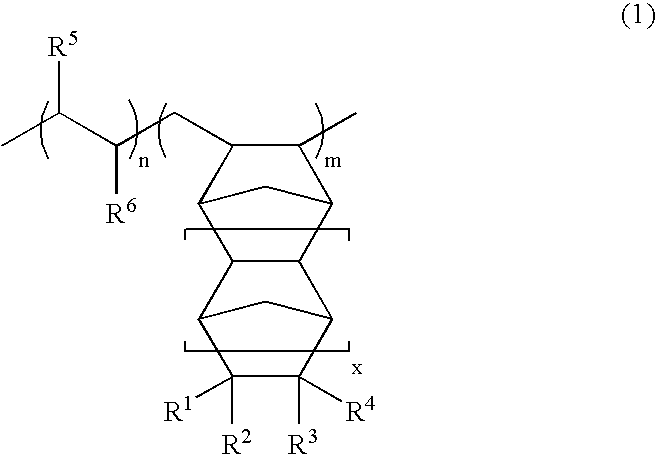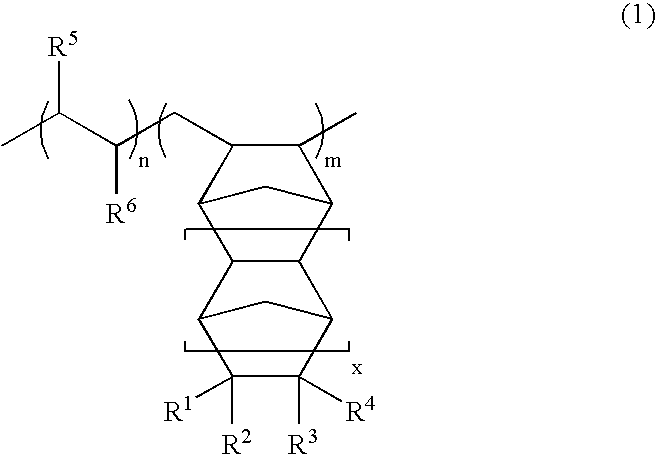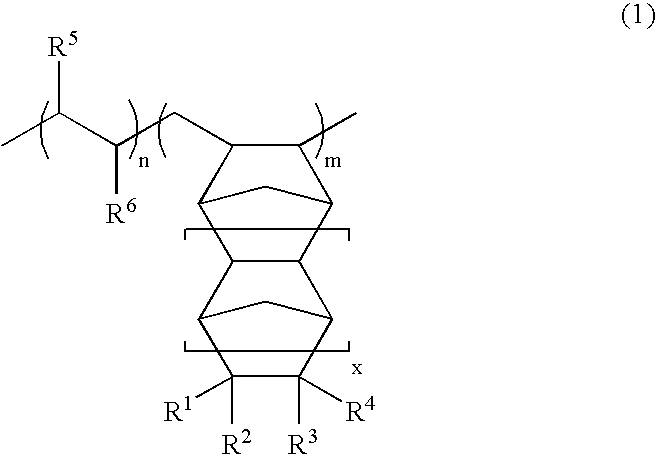Method for producing dot-printless light guide plate for liquid crystal display device using norbornene copolymer
a technology of norbornene copolymer and light guide plate, which is applied in the field of producing, can solve the problems of affecting the luminance of the print, the process of forming the light scattering pattern 4 by the dot-printing method with white ink, and the power consumption of the back lighting apparatus
- Summary
- Abstract
- Description
- Claims
- Application Information
AI Technical Summary
Benefits of technology
Problems solved by technology
Method used
Image
Examples
example 2
PRODUCING EXAMPLE 2
A resin was prepared following the same procedures as Producing Example 1, except that dimethylsilyl bisindenylzirconium dichloride was used as the catalyst. Results of this polymerization are shown in Table 1 below.
example 3
PRODUCING EXAMPLE 3
Resins were prepared following the same procedures as Producing Example 2, except that the added amount of norbornene was different as shown in Table 2. Results of this polymerization are shown in Table 2 below.
examples 1 to 5
100 weight parts of respective addition polymers of ethylene and norbornene obtained from Producing Example 1 to 3 were mixed with 0.2 weight parts of pentaerythritol tetrakis(3-(3,5-t-butyl-4-hydroxyphenyl)propyonate as an antiaging agent and 0.2 weight parts of 2,2,6,6-tetramethyl-4-pyperizylbenzoate as a light stabilizer, kneaded in a biaxial kneader and stand-cut to gain pellet-shaped resin The refraction index of the resin was 1.52. These pellets were injection-molded to prepare a light guide plate. The injection molder was IS450 produced by Toshiba and the mold had a configuration so as to prepare a light guide plate as shown in FIG. 2a. Conditions for injection was controlled as the mold temperature to be 80.degree. C., mean temperatures of the heating cylinders 4, 5, 6 and 7 to be 320.degree. C., the nozzle temperature to be 270.degree. C., injection pressure to be 2,000 kg / cm.sup.2, the holding pressure to be 500 kgf / cm.sup.2, the closing pressure to be 1300 kgf / cm.sup.2, t...
PUM
| Property | Measurement | Unit |
|---|---|---|
| surface temperature | aaaaa | aaaaa |
| wt % | aaaaa | aaaaa |
| wt % | aaaaa | aaaaa |
Abstract
Description
Claims
Application Information
 Login to View More
Login to View More - R&D
- Intellectual Property
- Life Sciences
- Materials
- Tech Scout
- Unparalleled Data Quality
- Higher Quality Content
- 60% Fewer Hallucinations
Browse by: Latest US Patents, China's latest patents, Technical Efficacy Thesaurus, Application Domain, Technology Topic, Popular Technical Reports.
© 2025 PatSnap. All rights reserved.Legal|Privacy policy|Modern Slavery Act Transparency Statement|Sitemap|About US| Contact US: help@patsnap.com



